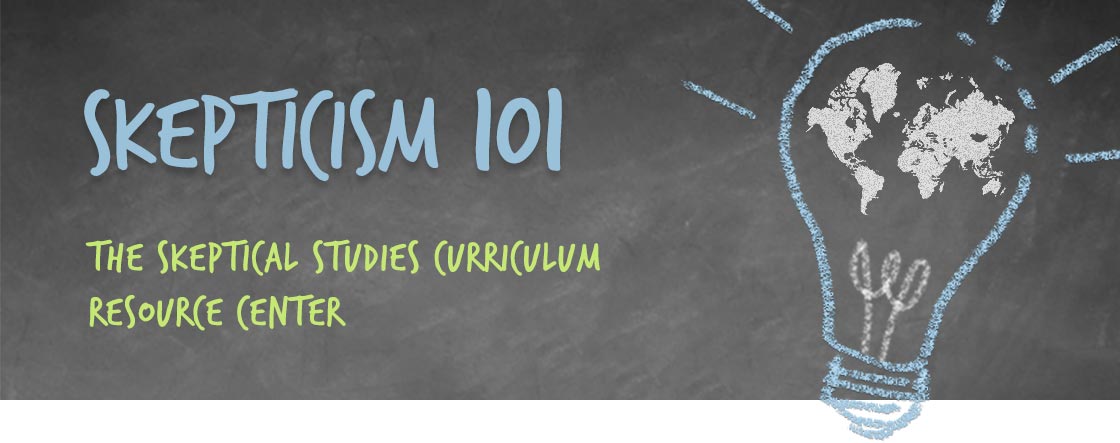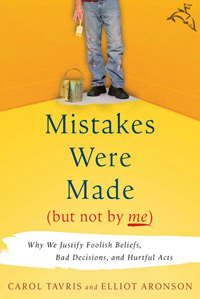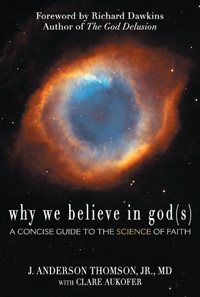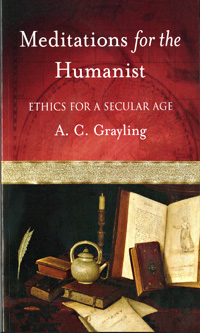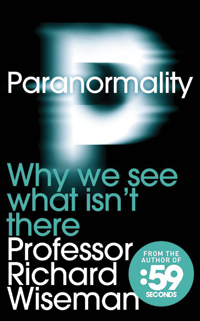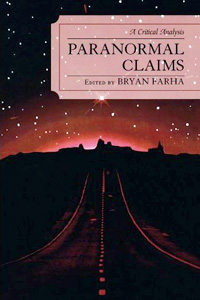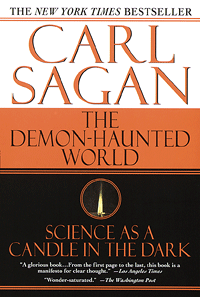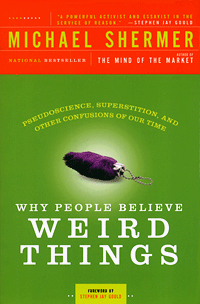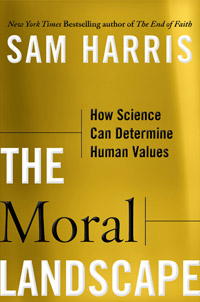You Are Browsing:
book recommendations
Although the other resources in this Resource Center are free, we cannot make these books available at no cost. We recommend them to you based on the required readings for the many course syllabi professors have shared with us.
This book was required reading for Travis Knowles’ course, “Skepticism & the Scientific Worldview” taught at Francis Marion University during fall 2010.
Why do people dodge responsibility when things fall apart? Why the parade of public figures unable to own up when they screw up? Why the endless marital quarrels over who is right? Why can we see hypocrisy in others but not in ourselves? Are we all liars? Or do we really believe the stories we tell?
Renowned social psychologists Carol Tavris and Elliot Aronson take a compelling look into how the brain is wired for self-justification. When we make mistakes, we must calm the cognitive dissonance that jars our feelings of self-worth. And so we create fictions that absolve us of responsibility, restoring our belief that we are smart, moral, and right—a belief that often keeps us on a course that is dumb, immoral, and wrong.
Backed by years of research and delivered in lively, energetic prose, Mistakes Were Made (But Not by Me) offers a fascinating explanation of self-deception—how it works, the harm it can cause, and how we can overcome it. —Amazon
BUY THIS BOOK
from Amazon
Carol Tavris gave a lecture on this book at the California Institute of Technology.
BUY THE DVD
from Shop Skeptic
This book was required reading for Thomas Holtz & John Merck’s course, “Science & Global Change Colloquium” taught at the University of Maryland during fall 2011.
Knowledge of the basic ideas and principles of science is fundamental to cultural literacy. But most books on science are often too obscure or too specialized to do the general reader much good.
Science Matters is a rare exception-a science book for the general reader that is informative enough to be a popular textbook for introductory courses in high school and college, and yet well-written enough to appeal to general readers uncomfortable with scientific jargon and complicated mathematics. And now, revised and expanded for the first time in nearly two decades, it is up-to-date, so that readers can enjoy Hazen and Trefil’s refreshingly accessible explanations of the most recent developments in science, from particle physics to biotechnology. —Amazon
BUY THIS BOOK
from Amazon
This book was required reading for the following courses: (1) “Science, Skepticism & Weird Behavior” taught by Bryan Lovelace, (2) “Skepticism & the Scientific Worldview” taught by Travis Knowles, (3) “Skepticism, Science & the Paranormal” taught by Martin Brigdstock, and (4) “The Scientific Method: Critical & Creative Thinking” taught by Stephen Sekula et al.
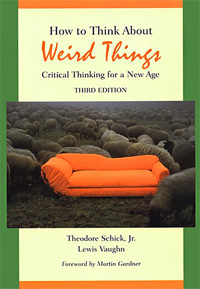
This brief text helps students to think critically, using examples from the weird claims and beliefs that abound in our culture to demonstrate the sound evaluation of any claim. It explains step-by-step how to sort through reasons, evaluate evidence, and tell when a claim (no matter how strange) is likely to be true. The emphasis is neither on debunking nor on advocating specific assertions, but on explaining principles of critical thinking that enable readers to evaluate claims for themselves. The authors focus on types of logical arguments and proofs, making How to Think about Weird Things a versatile supplement for logic, critical thinking, philosophy of science, or any other science appreciation courses.—Amazon
James Randi calls this textbook, “the most powerful, comprehensive, and readable collections of examples, explanations and caveats that I could have ever hoped for.” A library must!—Skeptic
BUY THIS BOOK
from Amazon
This book was required reading for Dr. Innes Mitchell’s course, “Perspectives on Atheism” taught at St. Edwards University during spring 2012.
In this groundbreaking work, J. Anderson Thomson, Jr., with Clare Aukofer, offers a succinct yet comprehensive study of how and why the human mind generates religious belief. Dr. Thomson, a highly regarded psychiatrist known for his studies of suicide terrorism, investigates the components and causes of religious belief in the same way any scientist would investigate the movement of astronomical bodies or the evolution of life over time, that is, as a purely natural phenomenon. Providing compelling evidence from cognitive psychology and the neurosciences, he presents an easily accessible and exceptionally convincing case that god(s) were created by man, not vice versa. With this volume, Dr. Thomson establishes himself as a must-read thinker and leading voice on the primacy of reason and science over superstition and religion.—Amazon
BUY THIS BOOK
from Amazon
This book was required reading for Dr. Innes Mitchell’s course, “Perspectives on Atheism” taught at St. Edwards University during spring 2012.
“Magnanimity is in short supply,” writes A. C. Grayling is this wonderfully incisive book, “but it is the main ingredient in everything that makes the world a better place” And indeed Meditations for the Humanist: Ethics for a Secular Age is itself a generous, insightful, wide-ranging, magnanimous inquiry into the philosophical and ethical questions that bear most strongly on the human condition.
Containing nearly fifty linked commentaries on topics ranging from love, lying, perseverance, revenge, racism, religion, history, loyalty, health, and leisure, Meditations for the Humanist does not offer definitive statements but rather prompts to reflection. These brief essays serve as springboards to the kind of thoughtful examination without which, as Socrates famously claimed, life is not worth living. As Graying notes in his introduction, “It is not necessary to arrive at polished theories on all these subjects, but it is necessary to give them at least a modicum of thought if one’s life is to have some degree of shape and direction.” The book is divided into three sections-Virtues and Attributes, Foes and Fallacies, and Amenities and Goods-and within these sections essays are grouped into related clusters. But each piece can be read alone and each is characterized by brevity, wit, and a liveliness of mind that recalls the best of Montaigne and Samuel Johnson. Grayling’s own perspective on these subjects is broadened and deepened by liberal quotations from Sophocles and Shakespeare to Byron, Twain, Proust, Simone de Beauvoir, Martin Luther King, Jr., and many others.
For those wishing to explore ethical issues outside the framework of organized religious belief, Meditations for the Humanist offers an inviting map to the country of philosophical reflection.—Amazon
BUY THIS BOOK
from Amazon
This book was required reading for Dr. Michael Shermer’s course, “Skepticism 101: How to Think Like a Scientist (Without Being a Geek)” taught at Chapman University during the fall 2011 semester.
“People are emotionally drawn to the supernatural. They actively want weird, spooky things to be true … Wiseman shows us a higher joy as he deftly skewers the paranormal charlatans, blows away the psychic fog and lets in the clear light of reason.”—Richard Dawkins
Richard Wiseman is clear about one thing: paranormal phenomena don’t exist. But in the same way that the science of space travel transforms our everyday lives, so research into telepathy, fortune-telling and out-of-body experiences produces remarkable insights into our brains, behaviour and beliefs. Paranormality embarks on a wild ghost chase into this new science of the supernatural and is packed with activities that allow you to experience the impossible. So throw away your crystals, ditch your lucky charms and cancel your subscription to Reincarnation Weekly. It is time to discover the real secrets of the paranormal. Learn how to control your dreams—and leave your body behind. Convince complete strangers that you know all about them. Unleash the power of your unconscious mind. —Amazon
BUY THIS BOOK
from Amazon
This book was required reading for Dr. Bryan Farha’s course, “Sociology of Belief” taught at Oklahoma City University during spring 2011.
Published in April of 2007, this academic text features articles regarding paranormal, extraordinary, or fringe-science claims. It logically examines the claims of astrology; psychic ability; alternative medicine and health claims; after-death communication; cryptozoology; and faith healing, all from a skeptical perspective. Paranormal Claims is a compilation of some of the most eye-opening articles about pseudoscience and extraordinary claims that often reveal logical, scientific explanations, or an outright scam. These articles, steeped in skepticism, teach critical thinking when approaching courses in psychology, sociology, philosophy, education, or science. —Amazon
BUY THIS BOOK
from Amazon
This book was required reading for the following courses: (1) “Skepticism 101: How to Think Like a Scientist Without Being a Geek” taught by Michael Shermer, (2) “Weird Science” taught by John Donovan, (3) “The Scientific Method: Critical & Creative Thinking” taught by Stephen Sekula et al., and (4) “Studies in Behavior: Critical Thinking” taught by Evelyn Buday.
“The great astronomer and science writer challenges New Agers and explains social phenomena like UFOs, alien abductions, recovered memories, satanic cults, witch crazes, hallucinations, and how to detect baloney. This is Sagan’s most popular book among skeptics, filled with quotable maxims, popular among college professors as a supplemental text for students, but a classic for everyone who cares about living in a sane and safe world without superstition.” —Skeptic
“Eminent Cornell astronomer and bestselling author Sagan debunks the paranormal and the unexplained in a study that will reassure hardcore skeptics but may leave others unsatisfied. To him, purported UFO encounters and alien abductions are products of gullibility, hallucination, misidentification, hoax and therapists’ pressure; some alleged encounters, he suggests, may screen memories of sexual abuse. He labels as hoaxes the crop circles, complex pictograms that appear in southern England’s wheat and barley fields, and he dismisses as a natural formation the Sphinx-like humanoid face incised on a mesa on Mars, first photographed by a Viking orbiter spacecraft in 1976 and considered by some scientists to be the engineered artifact of an alien civilization. In a passionate plea for scientific literacy, Sagan deftly debunks the myth of Atlantis, Filipino psychic surgeons and mediums such as J.Z. Knight, who claims to be in touch with a 35,000-year-old entity called Ramtha. He also brands as superstition ghosts, angels, fairies, demons, astrology, Bigfoot, the Loch Ness monster and religious apparitions. (Feb.)” —Publishers Weekly
BUY THIS BOOK
from Shop Skeptic
This book was required reading for the following courses: (1) “Skepticism 101: How to Think Like a Scientist Without Being a Geek” taught by Michael Shermer, (2) “Weird Science” taught by John Donovan, and (3) “Skepticism, Science, & the Paranormal” taught by Martin Bridgstock.
In this age of scientific enlightenment, many people still believe in mind reading, past-life regression theory, New Age hokum, and alien abduction. A no-holds-barred assault on popular superstitions and prejudices, Why People Believe Weird Things debunks these nonsensical claims and explores the very human reasons people find otherworldly phenomena, conspiracy theories, and cults so appealing. Michael Shermer takes on science luminaries like physicist Frank Tippler and others, who hide their spiritual beliefs behind the trappings of science.
Shermer, science historian and true crusader, also reveals the more dangerous side of such illogical thinking, including Holocaust denial, the recovered-memory movement, the satanic ritual abuse scare, and other modern crazes. Why People Believe Weird Things is an eye-opening resource for the most gullible among us and those who want to protect them.
BUY THIS BOOK
from Shop Skeptic
This book was required reading for the following courses: (1) “Evolution, Economics, and the Brain” taught by Michael Shermer, and (2) “Knowledge, Value & Rationality” taught by Peter Boghossian.
Sam Harris’s first book, The End of Faith, ignited a worldwide debate about the validity of religion. In the aftermath, Harris discovered that most people—from religious fundamentalists to nonbelieving scientists—agree on one point: science has nothing to say on the subject of human values. Indeed, our failure to address questions of meaning and morality through science has now become the most common justification for religious faith. It is also the primary reason why so many secularists and religious moderates feel obligated to “respect” the hardened superstitions of their more devout neighbors.
—Amazon
In this explosive new book, Sam Harris tears down the wall between scientific facts and human values, arguing that most people are simply mistaken about the relationship between morality and the rest of human knowledge. Harris urges us to think about morality in terms of human and animal well-being, viewing the experiences of conscious creatures as peaks and valleys on a “moral landscape.” Because there are definite facts to be known about where we fall on this landscape, Harris foresees a time when science will no longer limit itself to merely describing what people do in the name of “morality”; in principle, science should be able to tell us what we ought to do to live the best lives possible. Bringing a fresh perspective to age-old questions of right and wrong and good and evil, Harris demonstrates that we already know enough about the human brain and its relationship to events in the world to say that there are right and wrong answers to the most pressing questions of human life. Because such answers exist, moral relativism is simply false—and comes at increasing cost to humanity. And the intrusions of religion into the sphere of human values can be finally repelled: for just as there is no such thing as Christian physics or Muslim algebra, there can be no Christian or Muslim morality.—Skeptic
BUY THIS BOOK
from Shop Skeptic
← PREVIOUS PAGE

